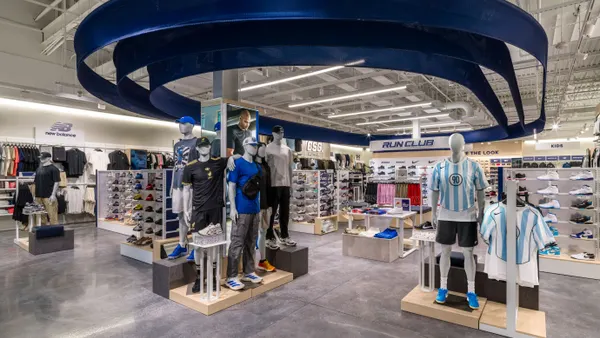Traditional retail is trying to keep up in a Now Economy era of “I see it, I want it, I’ve got it.” Additionally, shoppers not only expect to find the perfect pair of sneakers, but also for those sneakers to come from a brand that supports their personal values — and to appear at their doorstep within 48 hours – preferably with a low carbon footprint.
In response, many retailers are looking to implement a marketplace to accelerate time to market of new products and meet rapidly evolving demand. They do this by providing third-party sellers access to self-service tools in order to list and manage products in their online store while taking a commission of those sales in exchange. However, the biggest challenges to starting a marketplace are the unknowns of what’s needed to maintain trust with your customers and overcome the cold start problem - because it takes time to get enough of the right sellers for a marketplace to generate meaningful revenue.
Unify marketplace with drop ship to unlock business agility
The good news is that if you already have a drop ship program, there’s no need to reinvent the wheel. The goal of having both of these models is to maximize sales through third-party sellers while eliminating inventory risk. The key differences between drop ship and marketplace are whether you’re booking revenue from commissions or managing margin, and the varying degrees of control you pass to the seller in exchange for scale. If you’re currently operating a drop-ship program, then you already have 80 percent of what’s necessary to build a scalable marketplace - people, systems, processes and access to a trusted network of 3P sellers. What’s needed is a different payment model between you and the seller and tools that enable your sellers to manage parts of the customer experience.
Furthermore, because marketplace is commission-based, one of the key benefits of this model is the ability to rapidly test, learn and optimize new products based on real-time customer insights. If a product or seller performs well, you’ll want to shift those products into a higher margin model, such as drop ship or wholesale.
Retailers that can unify drop-ship and marketplace technology, operations and processes gain a competitive advantage in driving profitability and staying ahead of rapidly evolving customer trends. Separating these two models creates barriers to moving fast based on fluctuations in customer demand and where the product is in its lifecycle. Retailers who think of drop ship and marketplace differently unnecessarily create separate operational, financial and technical structures to support each program. The siloed approach could mean that it takes you 3-6 months to move a successful product to a higher margin model when instead, you could do it immediately without technical or people constraints.
Protect your customer experience by working backwards from your strategic differentiation
Retailers know that protecting their customer experience is a top priority and often have different requirements for the degree of control they’d like to maintain over the customer experience on marketplace items. These requirements are commonly based on business objectives combined with strategic brand differentiation. Customers don’t expect widely different experiences based on the retailers’ relationship with the seller, and it’s up to the retailer to determine which areas they’re willing to scale back control of for the sake of operational efficiency. For some retailers, maintaining control might mean enabling sellers to manage pricing and product content based on pre-defined rules and guardrails. For others, maintaining control means curating the sellers that get invited based on alignment with their brand.
The not-so-secret ingredient to marketplace success: Trusted sellers
To determine whether you have what’s needed to successfully scale in a marketplace model, it’s important to quickly validate with a proof of concept. Key questions to answer include:
- Are marketplace sellers driving the expected engagement and sales?
- Are you able to tap into a broad network of trusted sellers to further accelerate your growth?
- How quickly can you optimize assortment and retail model(s) with sellers based on fluctuations in customer demand without people, process or system constraints?
- In what parts of your pre- and post-purchase experience are customers expecting greater clarity?
Despite what many technology providers might say, the platform is not the most important factor for marketplace success. More important for accelerating growth is a proven network of trusted selling partners curated to drive sales. This enables you to grow your business while reducing risk of marketplace not producing the expected ROI.










